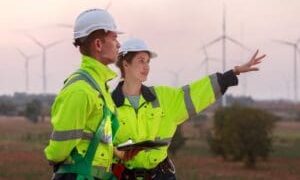<?xml encoding=”utf-8″ ?????????>
In today’s digital age, the protection of privacy is more important than ever, but so is accountability and transparency.
Video redaction sits at the intersection of these values, requiring careful consideration to ensure that sensitive information is safeguarded while maintaining accountability to the public and legal system. Let’s delve into the ethical complexities of video redaction and how to navigate them effectively.
The Role of Video Redaction in Protecting Privacy
At its core, video redaction serves as a shield for individuals’ privacy rights in an increasingly surveilled world. By obscuring or removing sensitive information from video footage, such as faces, licence plates, or personal identifiers, video redaction helps prevent unauthorised access and misuse of personal data. This is especially crucial in industries like law enforcement, healthcare, and corporate compliance, where maintaining the confidentiality of individuals’ information is paramount. Legal and regulatory frameworks, such as GDPR in Europe and HIPAA in the United States, provide guidelines for ensuring privacy protection in video redaction practices, further emphasising its importance in safeguarding personal privacy. Make sure you know about the consequences of redaction failure.
Ensuring Accountability and Transparency
While protecting privacy is essential, so too is maintaining accountability and transparency in the redaction process. Accountability ensures that those responsible for redacting video footage are held to high standards of conduct and decision-making. Transparency, on the other hand, involves openly communicating redaction decisions and methodologies to stakeholders and the public. This helps build trust and confidence in the redaction process, fostering greater accountability and compliance with ethical standards. Strategies for ensuring accountability and transparency in video redaction practices include establishing clear policies and procedures, documenting redaction decisions, and providing opportunities for public oversight and review.
The Impact of Emerging Technologies on Video Redaction Ethics
Advancements in technology, such as artificial intelligence and machine learning, are revolutionising the field of video redaction, but they also raise new ethical questions and concerns. While AI-powered redaction tools offer greater efficiency and accuracy in identifying and redacting sensitive information, they also pose risks of algorithmic bias and unintended consequences. Striking a balance between leveraging the benefits of technology and mitigating its ethical risks requires careful consideration and proactive measures to ensure responsible use of emerging technologies in video redaction practices.
What are the downsides of Manually Editing Videos?
Are you in the habit of manually redacting your footage? This might be a process you’ve always been used to. However, this doesn’t mean that it’s now the best procedure for your organisation. In fact, you know that many professionals and businesses have switched to automated video redaction software. This is due to the downsides of manual editing. Let’s take a look at what they are so you can understand why upgrading your process is important.
The Duration
Consider how much time you spend manually redacting your videos. This is a long time, which can be hours or days, depending on the duration of the footage. You can be better off using this time for other tasks.
This is where automated software comes in. It can complete redaction in around half the time of the footage. So, if you have one hour of footage to edit, this can take around 30 minutes. This is compared to the hours it can take you to do this manually.
The Risks
While you might feel like you’re experienced with redacting footage, know that you’re taking on a lot of risk. If you miss out faces or number plates, you could be breaching privacy rules. While you won’t be doing this deliberately, it won’t matter. You can make a mistake and it costs you dearly.
This is another reason why people are switching to automated redaction software. It’s highly accurate and can detect faces and number plates. Then, it can blur them for you. When you review all of the footage to ensure there are no mistakes, this creates a strong process that can benefit your organisation.
The Complexity
Don’t forget that manually editing videos isn’t an easy task. There are different types of blurring effects and you have to ensure they cover the right areas of the footage. In a busy scene, this isn’t a simple thing to do.
If you’re still struggling with manual editing, know that software can do it for you. You can simply choose the features you’re looking for and it’s all done.
Conclusion
Navigating the ethics of video redaction requires a delicate balance between protecting privacy and ensuring accountability and transparency. By understanding the role of video redaction in safeguarding privacy rights, implementing strategies for accountability and transparency, considering ethical dilemmas in specific use cases, and responsibly leveraging emerging technologies, organizations can uphold high ethical standards in their redaction practices. Together, let’s strive to promote ethical video redaction practices that respect individuals’ privacy rights while fostering trust and accountability in our digital world.

























